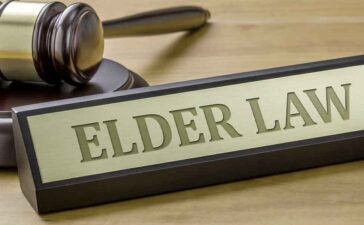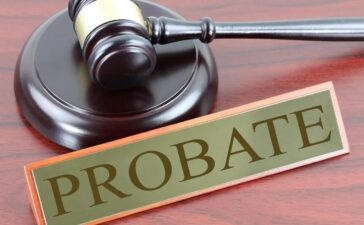Pets hold a special place in our lives, providing companionship, comfort, and often a source of unbridled joy. However, a complex web of legal considerations comes into play when a pet’s behavior leads to personal injuries. This article sheds light on the legal responsibilities that pet owners bear and the rights of individuals who suffer harm due to such incidents.
Understanding Pet Owner Liability
Pet ownership brings joy and companionship, but it also carries a responsibility to ensure the safety of others. When pets cause injuries, questions of liability arise, and understanding the legal nuances becomes crucial.
Defining Pet Owner Liability
Pet owner liability refers to the legal responsibility of individuals who own or harbor animals for their pets’ actions. This acknowledges that while animals can bring happiness, they also have the potential to cause harm. According to the Canine Journal, almost 4.5 million people are bitten in the USA by pet dogs every year. The legal system has established guidelines to protect those injured from animal attacks.
The Principle of Strict Liability
The principle of strict liability applies to many animal attack cases. It holds pet owners liable for injuries caused by their animals, regardless of negligence or foreseeability. Strict liability emphasizes the importance of preventing harm.
The Role of Negligence and Foreseeability
Negligence and foreseeability also influence liability. Negligence, a failure to exercise reasonable care, can impact cases if a pet owner is negligent in handling their animal. Foreseeability considers if the owner could have predicted potential harm.
Impact of Local Laws and Regulations
Liability can vary based on local laws. Some areas have specific ordinances defining pet owners’ responsibilities, including leash laws and animal restrictions. Understanding local regulations is essential for both pet owners and potential victims.
Types of Animal-Related Injuries
Amid harmonious relationships, there are moments when this equilibrium is disrupted, resulting in unfortunate incidents. This section explores injury types from animal attacks, highlighting the importance of understanding potential risks.
- Bites and scratches: Bites and scratches are common injuries from animal attacks. Even minor wounds can lead to infections, stressing the importance of caution around animals.
- Knockdowns and trampling: Larger animals, like dogs or horses, can cause injuries through size and strength. These incidents are concerning in public spaces where people may encounter unfamiliar animals.
- Psychological and emotional injuries: Animal attacks inflict emotional distress. The trauma can lead to anxiety, fear, or even PTSD for victims, requiring professional treatment.
- Zoonotic diseases: Animal attacks can lead to zoonotic disease transmission. Bites from animals carrying rabies can result in potentially fatal infections.
- Long-term consequences: Some injuries from animal attacks have long-term effects, like scarring or permanent disabilities, impacting victims’ quality of life.
Factors Affecting Liability
Determining liability involves factors like strict liability, negligence, foreseeability, and the circumstances of the incident.
1. Negligence and Reasonable Care
Negligence plays a pivotal role in assessing liability in animal attack cases. The courts consider whether the pet owner acted negligently in preventing the attack. Did the owner take reasonable precautions to ensure their pet wouldn’t pose a danger to others? For instance, failing to secure a potentially aggressive dog properly might be seen as negligent behavior.
2. Foreseeability of Harm
Foreseeability involves assessing whether a reasonable person could have predicted that an animal might cause harm. If a pet owner was aware of their animal’s aggressive tendencies or dangerous behavior and failed to take appropriate measures, they might be liable for any harm.
3. Comparative Negligence
Sometimes, the victim’s behavior might also be scrutinized to determine if their actions contributed to the incident. Comparative negligence examines whether the victim’s actions provoked the animal or exacerbated the situation. The degree to which the victim’s actions contributed can impact the allocation of liability.
4. Previous Incidents and History
A pet’s history of aggressive behavior or previous attacks can significantly influence the outcome of an animal attack case. If pet owners are aware of their animal’s history but fail to take preventative measures, their liability may increase.
5. The Importance of Documentation
Thorough documentation is essential for victims and pet owners in the aftermath of an animal attack. Proper documentation of injuries, medical treatments, and the incident’s circumstances can strengthen victims’ cases. For pet owners, maintaining records of their animal’s behavior and any measures taken to prevent aggression can serve as valuable evidence.
6. Emotional Distress and Non-Physical Injuries
In some instances, victims may seek compensation for physical injuries and emotional distress resulting from the attack. Demonstrating emotional distress can be more challenging, but it highlights the holistic impact of animal attacks on victims’ lives.
7. Burden of Proof
It’s important to note that the burden of proof in legal proceedings rests on the party asserting the claim. This means that the victim (plaintiff) typically must provide evidence demonstrating the pet owner’s negligence, foreseeability, or other factors that establish liability.
When Homeowner’s and Renter’s Insurance Come into Play
The aftermath of an animal attack can be overwhelming, both for the victim seeking recourse and the pet owner facing potential liability. In many cases, homeowner’s and renter’s insurance policies play a pivotal role in addressing the financial aspects of these situations.
Homeowner’s and Renter’s Insurance Coverage
Homeowner’s and renter’s insurance policies often include liability coverage that can extend to incidents involving animal attacks. This means that if a pet owner’s animal causes injuries to someone else, their insurance policy might cover the resulting medical expenses, legal fees, and potential settlements.
Reporting the Incident to Insurance
In the event of an animal attack, it’s crucial for both the victim and the pet owner to report the incident to their respective insurance companies promptly. This initiates the claims process and allows the insurance provider to investigate the incident, assess liability, and determine the extent of coverage.
Insurance Claims Process
Filing an insurance claim involves submitting documentation of the incident, including medical records, photographs of injuries, and any relevant communication. The insurance company will evaluate the evidence and may conduct its own investigation to determine liability and the appropriate compensation amount.
Negotiating Settlements
Insurance companies often aim to settle claims without going to court. They may negotiate with the victim’s legal representation to reach a settlement that covers medical expenses, potential ongoing treatment, and compensation for pain and suffering. Negotiations can involve a back-and-forth process to reach a mutually agreeable resolution.
Exceptions and Exclusions
It’s important to note that insurance coverage for animal attacks may have exceptions and exclusions. For instance, some policies might exclude certain dog breeds considered high-risk or have a history of aggression. Policyholders should carefully review their insurance terms to understand the scope of coverage.
Legal Representation in Insurance Claims
While insurance companies aim to resolve claims amicably, having legal representation can benefit both victims and pet owners. An experienced personal injury attorney can help navigate the complexities of insurance negotiations, ensuring that the victim receives fair compensation and that the pet owner’s rights are protected.
Preparing for Legal Proceedings
Legal proceedings might be necessary if insurance negotiations don’t lead to a satisfactory resolution. While this can be daunting, having documentation, evidence, and legal counsel in place from the outset can make the process more manageable.
Mitigating Liability as a Pet Owner

Responsible pet ownership goes beyond loving and caring for our animal companions; it involves taking proactive steps to prevent incidents that could harm others. Understanding potential risks and implementing preventive measures can play a significant role in mitigating liability.
- Proper training and socialization: Training your pet is an essential aspect of responsible ownership. Enroll your pet in obedience classes and ensure they learn basic commands, including recall and “sit-stay.” Socialization is equally vital; expose your pet to various environments, people, and other animals to reduce the likelihood of aggressive behavior.
- Supervision and control: Whenever your pet is outside your property, ensure they are properly supervised and under control. Leash laws exist in many areas for a reason — to prevent animals from wandering into potentially dangerous situations or causing harm to others.
- Awareness of triggers: Understanding your pet’s triggers — situations or stimuli that cause stress, fear, or aggression — can help you avoid potentially hazardous situations. If you know your pet is reactive around other animals or strangers, minimize their exposure to these triggers.
- Proper enclosures: Providing secure and appropriate enclosures is crucial for pets that are kept outdoors. Fencing should be tall and sturdy enough to prevent escapes and protect passersby. Consider investing in escape-proof enclosures for pets with a history of running off.
- Warning signs: Displaying warning signs, such as “Beware of Dog,” can inform visitors and passersby that a pet is on the premises. While these signs may not absolve you of liability, they indicate that you are aware of your pet’s presence and are taking steps to caution others.
- Behavioral interventions: If your pet displays aggression or other problematic behaviors, seek the assistance of a professional animal behaviorist or trainer. Addressing these behaviors early can prevent future incidents and help create a more harmonious relationship between you and your pet.
- Adhering to local laws: Familiarize yourself with local animal control laws and regulations. Abiding by leash laws, adhering to breed-specific legislation, and complying with licensing requirements are all crucial aspects of responsible pet ownership.
- Insurance coverage: Consider exploring pet liability insurance, which can provide extra protection if your pet is involved in an incident resulting in injuries. This coverage can help mitigate potential financial implications.
Legal Recourse for Victims
Experiencing an animal attack can be traumatic and overwhelming. Victims of such incidents have legal options to seek compensation for their injuries, medical expenses, and emotional distress.
1. Seek Immediate Medical Attention
The priority after an animal attack is to seek medical attention. Even seemingly minor injuries can lead to complications, so it’s crucial to have a healthcare professional assess your condition and provide appropriate treatment.
2. Document Injuries and Incident Details
Document your injuries, including photographs of wounds and any visible damage. Write down the details of the incident, including the date, time, location, and any witnesses present. These records can serve as crucial evidence in your case.
3. Gather Information from the Pet Owner
If possible, obtain the pet owner’s contact information and insurance details. If there are witnesses, gather their contact information as well. This information can help establish liability and facilitate communication with relevant parties.
4. Preserve Evidence
Preserve any clothing, belongings, or items damaged during the attack. These items could provide additional evidence of the incident and the extent of your injuries.
5. Report the Incident
Depending on the severity of the attack and local regulations, consider reporting the incident to local animal control or law enforcement. This creates an official record of the incident and helps ensure the community’s safety.
6. Consult with a Personal Injury Attorney
After seeking medical attention and gathering initial information, consult with a personal injury attorney experienced in animal attack cases. An attorney can assess the details of your case, provide legal advice, and guide you through the process of seeking compensation.
7. Determining Liability and Compensation
Your attorney will help you determine liability by examining factors such as negligence, foreseeability, and the circumstances of the incident. They will also assess the extent of your injuries and calculate the appropriate compensation to cover medical expenses, treatment, pain and suffering, and potential long-term impacts.
8. Negotiations and Legal Action
Your attorney will negotiate a fair settlement with the pet owner’s insurance company. If negotiations are unsuccessful, they can guide you through filing a personal injury lawsuit. Legal action aims to ensure you receive the compensation you deserve for the incident’s physical, emotional, and financial toll.
9. Emotional Distress and Non-Economic Damages
In addition to physical injuries, victims may be entitled to compensation for emotional distress and non-economic damages. These damages acknowledge the psychological toll of the incident and its impact on your overall well-being.
Defenses and Counterclaims
In cases of animal attacks, pet owners facing potential liability may raise defenses and counterclaims to challenge the allegations against them. Understanding these legal strategies is essential for both victims and pet owners seeking a comprehensive view of the potential outcomes in such cases.
- Provocation: One common defense is the claim of provocation, suggesting that the victim’s actions incited the animal’s aggressive behavior. Pet owners may argue that the victim engaged in behavior that antagonized or frightened the animal, leading to the attack.
- Trespassing: Pet owners might assert that the victim was trespassing on their property, thereby assuming a level of risk associated with encountering the pet. In such cases, liability may be diminished or shifted to the victim entirely.
- Comparative negligence: As discussed earlier, comparative negligence examines the victim’s own actions to determine the degree to which they contributed to the incident. Pet owners may argue that the victim’s behavior played a significant role in the attack, thus seeking to reduce their liability.
- Lack of knowledge or control: Pet owners might claim they were unaware of their pet’s aggressive tendencies or were taking reasonable steps to control their animal when the incident occurred.
- Consent or assumption of risk: In certain situations, victims might have willingly engaged with the pet in a manner that could reasonably be considered risky, such as playing with a dog known to be boisterous. Pet owners may assert that the victim consented to the possibility of injury.
Seeking Legal Counsel
When faced with the complexities of animal attack cases, seeking legal counsel is crucial for both victims and pet owners. An experienced personal injury attorney can provide valuable guidance, advocate for your rights, and navigate the legal landscape on your behalf. The average insurance payout for a dog bite in 2022 was $64,555, but you may get less than that amount for a minor dog bite settlement or more if you sustained severe injuries.
1. Understanding Your Rights
Personal injury lawyers specializing in animal attack cases understand victims’ and pet owners’ legal rights and responsibilities. They can assess the specifics of your situation and provide clear insights into the potential outcomes of your case.
2. Legal Strategy and Guidance
An attorney can help you formulate a comprehensive legal strategy tailored to your unique circumstances. They will guide you through the steps to take, the evidence to gather, and the potential challenges you might encounter.
3. Negotiations and Settlements
Attorneys are skilled negotiators who can engage with insurance companies, opposing legal teams, and other parties on your behalf. They will strive for fair settlement covering your medical expenses, pain and suffering, and other damages.
4. Maximizing Compensation
An experienced attorney will work diligently to ensure you receive the maximum compensation you’re entitled to. They can evaluate the extent of your injuries, estimate future medical expenses, and calculate non-economic damages to ensure that your settlement accurately reflects the impact of the incident on your life.
5. Legal Representation in Court
Your attorney can represent you in court if negotiations do not lead to a satisfactory resolution. They will present your case, cross-examine witnesses, and advocate for your rights before a judge and jury.
6. Handling Complex Legal Processes
Legal proceedings involving animal attack cases can be complex, involving intricate legal arguments, evidence, and documentation. An attorney with experience in these cases ensures you are well-prepared to navigate the legal process effectively.
7. Peace of Mind
Engaging a personal injury attorney provides peace of mind during a stressful and challenging time. You can focus on your recovery and well-being, knowing that a legal expert is advocating for your best interests.
8. Empowering You with Knowledge
Beyond legal representation, attorneys offer knowledge and insights that empower you to make informed decisions. They will explain legal jargon, answer your questions, and keep you informed about the progress of your case.
By consulting with a personal injury attorney, you’re taking proactive steps toward pursuing justice and ensuring that your rights are protected throughout the legal process. Whether you’re a victim seeking compensation or a pet owner facing potential liability, the expertise of a legal professional can be invaluable in achieving a fair resolution and moving forward with your life.





